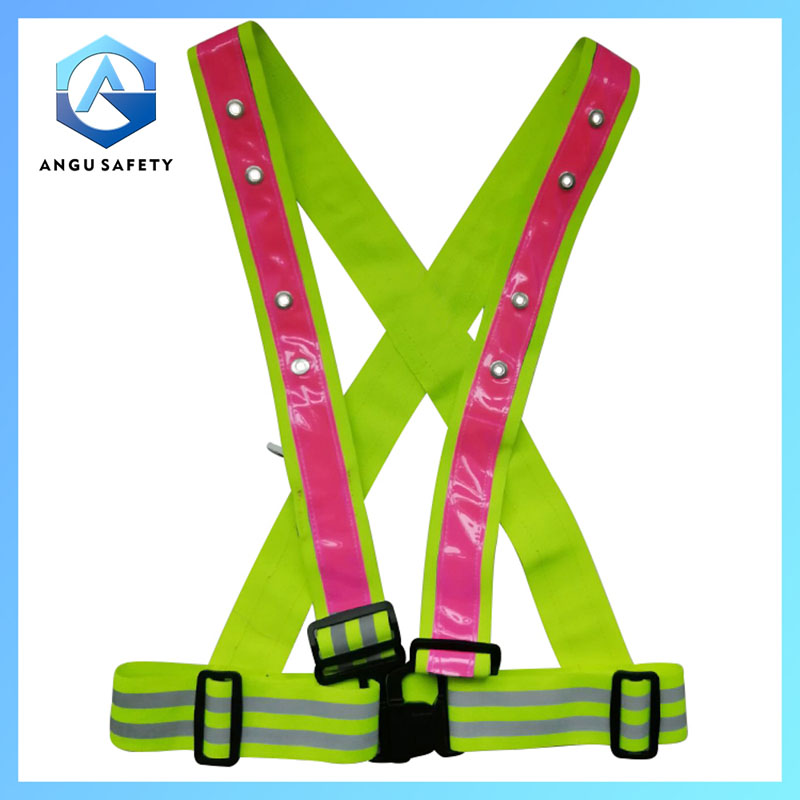Why Choose a Safety Vest for Workplace Protection?
2025-11-12
In today's fast-paced work environments, safety is paramount. A Safety Vest plays a crucial role in protecting workers, ensuring visibility, and preventing accidents, especially in high-risk areas like construction sites, roadwork zones, and industrial settings. But with so many options available, what makes a safety vest the right choice for your team? Let's explore the key features and benefits of a Safety Vest, and why it's essential for maintaining a safe and productive workplace.
What Are the Key Features of a High-Quality Safety Vest?
When choosing a Safety Vest, it's important to look for certain features that ensure both comfort and visibility. Here are some parameters to consider:
| Feature | Description |
|---|---|
| Material | Durable, breathable fabrics like polyester or mesh |
| Reflective Strips | High-visibility reflective bands for night visibility |
| Closure Type | Velcro or zipper for easy wear and removal |
| Size Options | Available in multiple sizes to fit all body types |
| Color | Bright colors like neon yellow, orange, or green |
| Pockets | Multiple pockets for tools and accessories |
These features not only enhance the safety of workers but also provide comfort for extended periods of use. Whether in bright daylight or low-light conditions, a Safety Vest ensures that workers are easily visible from a distance, reducing the chances of accidents.
How Does a Safety Vest Improve Workplace Safety?
The main purpose of a Safety Vest is to improve visibility. But how exactly does this contribute to safety in the workplace? Here are the key reasons why wearing a Safety Vest is crucial:
-
Visibility in Hazardous Areas
Workers in construction, road maintenance, or emergency response areas are often exposed to high-risk situations. A Safety Vest makes them more visible to drivers, machinery operators, and other workers, reducing the likelihood of accidents. -
Quick Identification
During emergencies, it's critical to identify workers quickly. A Safety Vest in bright colors with reflective strips ensures that team members are easily spotted in chaotic situations. -
Compliance with Regulations
Many industries are required to comply with safety regulations that mandate the use of high-visibility clothing. A Safety Vest helps businesses meet these standards and avoid legal penalties.
Why Is Comfort Important in a Safety Vest?
Comfort is just as important as safety. A Safety Vest must allow workers to move freely while still providing the necessary protection. Here's why comfort matters:
-
Extended Wear: Workers often wear safety vests for long hours, sometimes even in physically demanding environments. A well-designed vest, made of breathable, lightweight materials, ensures that workers stay comfortable and can focus on their tasks without being distracted by discomfort.
-
Fit: A poorly fitting vest can restrict movement, causing irritation or even accidents. The Safety Vest should be adjustable, ensuring it fits snugly but doesn't limit mobility.
What Are the Different Types of Safety Vests?
Depending on the work environment, there are various types of Safety Vests that provide different levels of visibility and protection. Here's a quick overview:
| Type | Ideal For |
|---|---|
| Class 1 Safety Vests | Low-risk areas like warehouses and airports |
| Class 2 Safety Vests | Roadway construction zones and parking areas |
| Class 3 Safety Vests | High-risk areas with fast-moving traffic or machinery |
Each class offers different levels of reflective material and overall coverage. The appropriate class depends on the level of risk associated with the job.
FAQ: Common Questions About Safety Vests
Q1: How should I choose the right size for a Safety Vest?
A1: It's important to select a Safety Vest that fits comfortably. Measure your chest and waist, and check the manufacturer's size guide to ensure a proper fit. Adjustable features like Velcro straps or zippers can help accommodate different body types.
Q2: Are Safety Vests suitable for use in all weather conditions?
A2: Yes, many Safety Vests are designed for use in various weather conditions. Some are made with breathable fabrics for hot climates, while others feature insulation for cold environments. Look for moisture-wicking or weather-resistant materials based on your specific needs.
Q3: How often should Safety Vests be replaced?
A3: Safety Vests should be inspected regularly for signs of wear and tear, especially reflective strips or seams. If they are damaged or no longer provide adequate visibility, it's time for a replacement. Most vests should be replaced after 1-2 years of use, depending on the work conditions.
For more information about our high-quality Safety Vests or to place an order, feel free to contact Ningbo Angu Safety Products Co., Ltd. We specialize in providing durable and reliable safety products that meet the highest industry standards.





